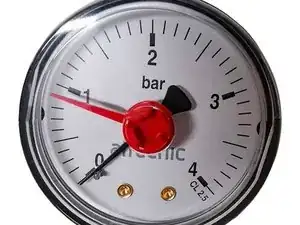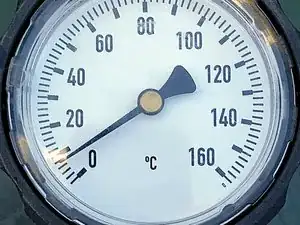Introduction
Solar thermal uses the sun to heat water NOT produce electricity - that’s PV (photo voltaic). It works like a green house so even in deep winter it’s collecting heat and saving you energy.
Unfortunately few people realise systems need maintenance. When not maintained they often simply stop working. At that point they can start to cost you money instead of saving it.
These quick checks (that anyone can do) allow you to identify if yours has a problem so you can get it fixed and get back to saving money and emissions. NO technical expertise whatsoever is required to do these checks.
-
-
The first thing to check is the pressure gauge. See the image.
-
Often it has a marker (the red needle) which tells you the pressure your system should normally sit at.
-
If, like the one in the picture, yours reads zero (see the black needle), then it's time to call someone to get it fixed.
-
-
-
The second thing to check is the temperature of the system. When the system is working properly, its temperature can sit anywhere between 40 & 120 (degrees Centigrade). If you have TWO gauges, one should always read higher than the other.
-
When the temperature shown on the gauge (or gauges) is the ambient temperature (i.e. the temperature of the space in which it's located) then it needs attention. Time to call someone to fix it.
-
-
-
The third thing to check is the flow gauge. It normally sits below a temperature gauge. You can see here at the top of the glass section L/MIN. That stands for 'litres per minute' i.e. how fast the fluid is flowing around your system when the pump is working.
-
When the pump is running, you should see in the window a small plastic float gently bobbing around (often a white or off white colour). When working correctly, i.e. when teh fluid is flowing as it should, the bottom of the float generally sits between 3 & 5.
-
If the pump is running and, like here, NO float is visible then there is no flow in your system. Time to call someone to get it fixed.
-



